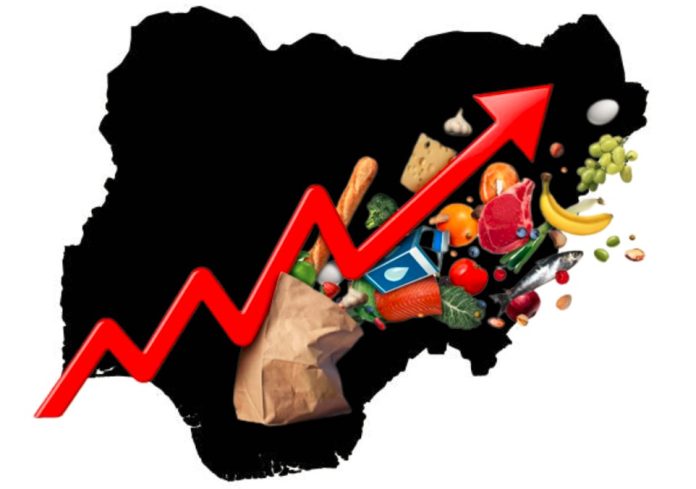News in brief: Nigeria inflation rate rose from 22.04% in March to 22.22% in April 2023. Meanwhile, food and non-alcoholic beverages contributed 11.51% (the most) to the inflation rate from April 2022 to April 2023.
According to a report from the National Bureau of Statistics (NBS) on Monday, Nigeria headline inflation rate for April 2023 was 22.22%. This means the percentage change in consumer price index (CPI) or simply, things got more expensive!
In March, the preceding month, the inflation rate was 22.04%, which means that the rate increased by 0.18%. The trend is ascending when you consider that inflation rate for February was 21.91% and 21.82% in January.
As for year-over-year comparison, April 2022 showed a 16.82% inflation rate. Also, in the last 12 months that ended in April 2023, the average was 20.82%, which is higher than the previous 12-month average of 16.45%.
Food prices continue to drive Nigeria inflation rate
An easier to understand how expensive things are becoming is to look at one common item. Let’s say food and non-alcoholic beverages, for example, because this division of item does not exclude any class or age group of the populace.
NBS data showed that this class of item contributed 11.51% to the total inflation rate from April 2022 to April 2023, which is the highest by a long shot. If a particular item from this division, say bread, began the 12-month period at â¦â700, it could have ended it at â¦â780 or there about. Of course, the price change may not reflect on every item under the division, those that remain the same are compensated for by those that increased.

Prices in the housing water, electricity, gas and other fuel division rose by 3.72% during the 12-month period under consideration. The sheer gap between the contributions to total inflation shows where the pain point is for ordinary Nigerians as food continues to be responsible for the bulk of inflation. Communication and recreation prices rose the lowest at 0.15% each.
Where in Nigeria was inflation highest?
When broken down by states in the country, people in Bayelsa, Kogi, and Rivers saw the highest price shift on a year-on-year basis for all items. However, when it comes to food, people living in Kogi, Kwara, and Bayelsa saw the highest year-on-year price changes. Food prices in Sokoto, Taraba and Jigawa were lowest year-on-year while all items prices remained lower in places like Borno, Taraba and Sokoto.
Taking a cursory look at the states profiles for inflation in Nigeria may make it seem like places with lowest inflation, like Sokoto or Taraba, are the best places to be. You have to remember that while cost of production, cost of logistics, and demand, determine prices, to determine where to live, you need to look at more than just prices of common items.



